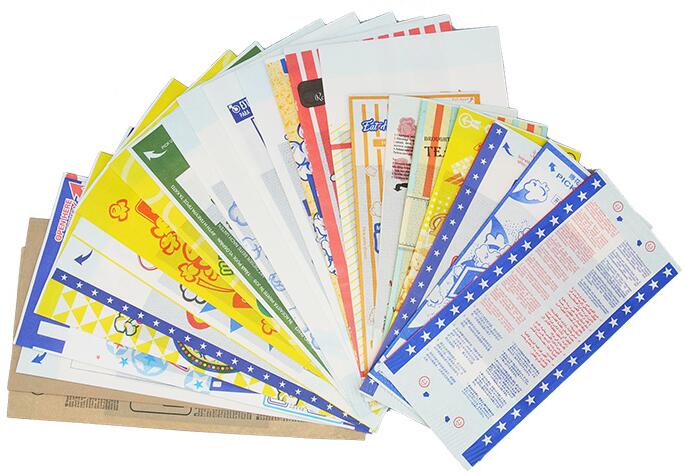When working with packaging companies, you may want to keep in mind these points to get the kraft paper product you like:
1. Materials for making kraft paper bags
If not bleached, kraft paper often has some traditional colors are yellow brown, yellow gray, dark brown. In addition, the paper company can also bleach the color to have lighter color kraft paper such as cream, yellow gray or ivory.
Kraft paper can be made from virgin wood pulp or recycled pulp (used paper products and recycled into new paper). To ensure the source of wood for paper, you can choose packaging companies that have FSC standard.
Because the FSC (Kraft Forest Stewardship Council) standard means the wood material for making paper bags is sourced from strictly managed forests for harvesting accompanied by maintenance and reforestation, not illegal or smuggling wood.

2. Method of printing kraft paper bags
Compared to digital or flexo printing, offset printing kraft paper bags have more advantages such as:
● The image of offset printing is crisp and clean: Due to the elastic printing gear system, it can be applied evenly on the surface. At the same time, the ink is printed on the platen, then transmitted through the surface of the printing material to avoid ink smudging, ensuring a cleaner and more delicate image.
● Even printing colors: offset printing is often used for orders printed kraft paper bags in large quantities, ensuring calculation same color between paper bag products.
● The more the quantity is printed, the lower the price is: Since the nature of this printing method is to use fixed prints, the higher the price of kraft paper bags, the lower the image quality. Not only that, offset printing also saves ink costs.
3. Processing kraft paper bags after printing
A beautiful kraft paper bag is made up of many factors, including post-printing processes such as needle press, emulsion, shaping to increase the aesthetics of the product.
● Shaping and cutting: The process of using a die-cutting machine to cut and groove printed paper bags in the designed shape, create windows for paper bags (if necessary)
● Submerging and embossing: Technique to emphasize a detail on kraft paper bags such as logos, symbols, text on the bag
● Molding: The purpose of this technique is similar to submerging, embossing, is to emphasize part of the product surface with gold emulsion, silver emulsion or other colors.
Besides, choosing the appropriate kraft paper straps also significantly increases the beauty of the bag, the commonly used paper bag straps such as: Paper bag straps (twisted or folded paper), cotton, ribbon, PP ball.
With the above-mentioned advantages, kraft paper bags can be "transformed unpredictably" in various roles such as gift kraft paper bags, food-grade kraft bags, clothes, shoes.
Comments
Post a Comment